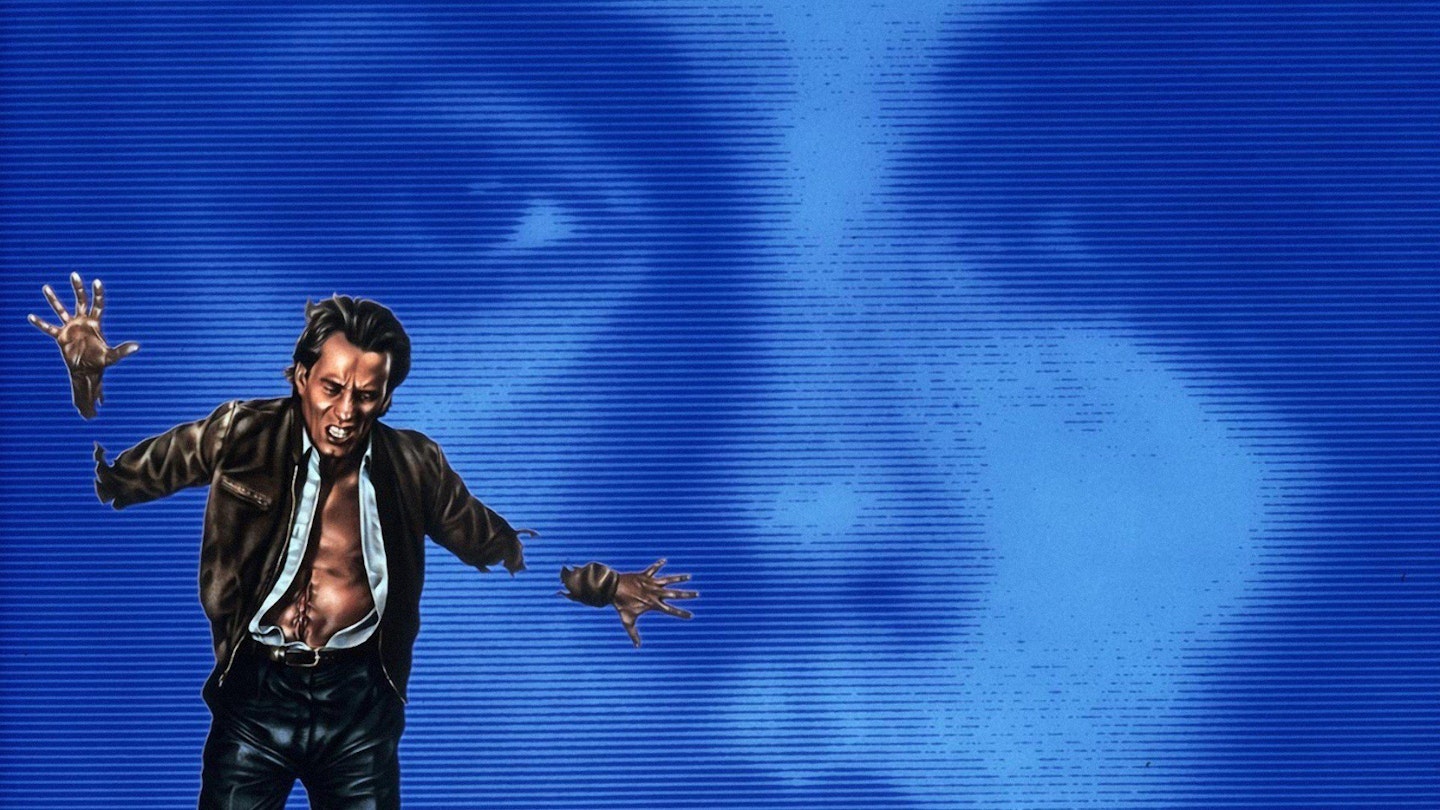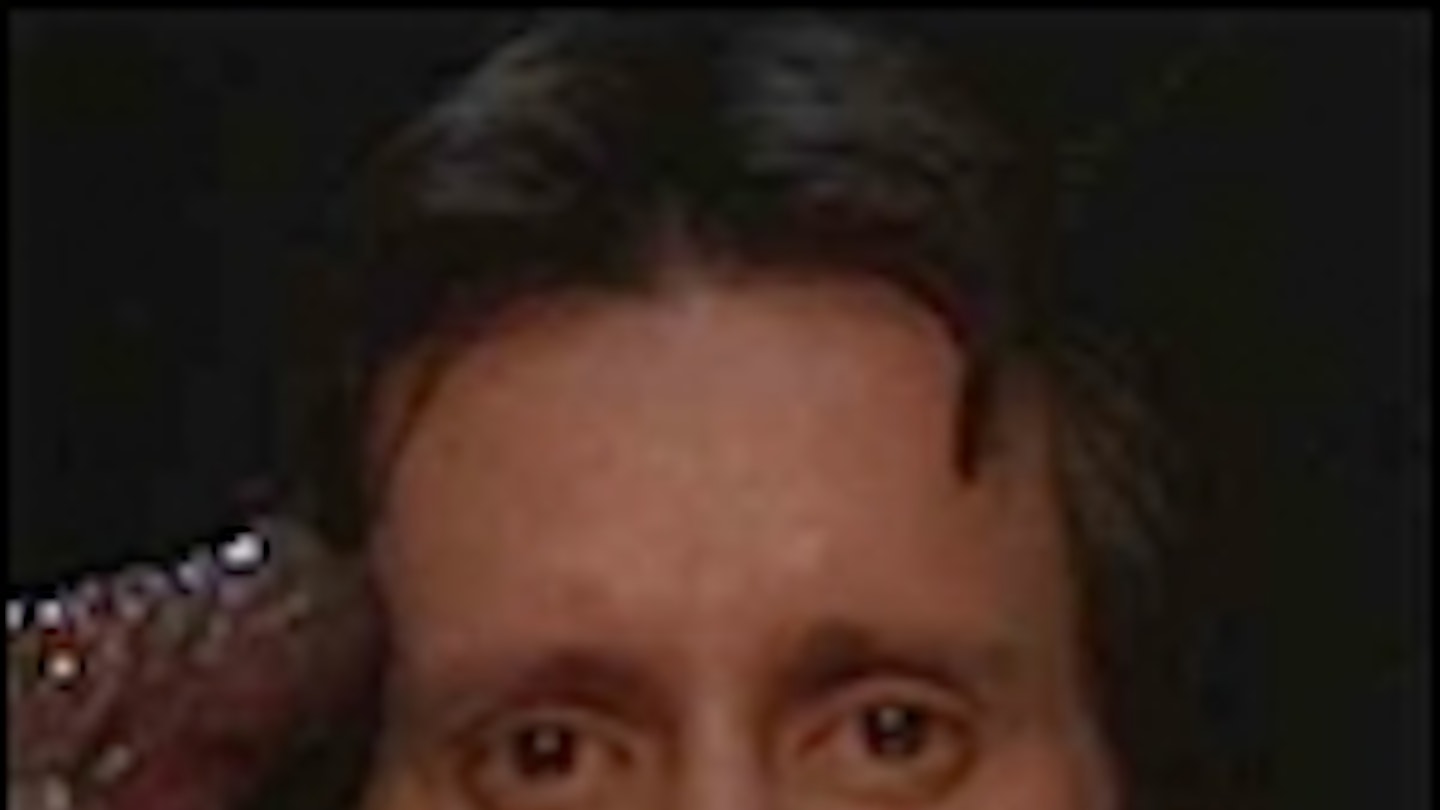A man and a woman begin to kiss. As they get more and more passionate their faces begin to liquefy and merge into one another, finally running off their skulls entirely. The molten mess slinks across the floor and up a bystander's leg who, screaming, proceeds to turn into goo himself. Fade to black...
Not, as it happens, a sequence that made it into David Cronenberg's Videodrome effects director Rick Baker took one look at it in script form and realised there was no way his parsimonious $500,000 budget would stretch to this kind of latex lunacy (and, indeed, it would be a full decade before FX wunderkind Screaming Mad George would deliver a similar sequence in Brian Yuzna's horror satire Society) but it's pretty typical of the twisted imagery coursing through the Canadian director's head as he sat in a rented office in downtown Toronto and worked on, what was then, a screenplay entitled Network Of Blood.
But if the sloppy snogging didn't get any further than Cronenberg's typewriter there was enough of his unique brand of fleshy surrealism in Videodrome to cement his reputation as the most challenging director working in horror (if that's an adequate word). It also, of course, sent detractors hurtling for the Basildon Bond to fire off letters to whoever might be able to stop him ever assaulting the screen, or their senses, again.
Like the bulk of Cronenberg's work, Videodrome is impossible to adequately categorise. It perches on the cusp of sci-fi and horror the story, such as it is, is pretty much sci-fi. A secret television signal is hidden behind extreme pornography images of men and women chained to electrified clay walls being beaten and tortured, called Videodrome.
When TV executive MaxRenn (Woods) is exposed to it it causes a brain tumour to develop which in turn generates increasingly bizarre hallucinations, visions that are the stuff of horror. A weird vagina-like wound appears on Renn's chest, videocassettes and his television develop veins and begin to pulsate; he imagines acts of violence that he doesn't appear to actually commit. Behind the signal are media expert Professor Brian O'Blivien, who exists only in the form of a giant library of videocassettes, and sinister businessman Barry Convex (Cronenberg remains the king of movie names, having delivered the likes of Strathis Borans, Adrian Tripod, Darryl Revok and Dr. Dan Keloid in his previous films) who intends to use the signal to form a new world order a population composed entirely of the ultimate in telly addicts.
Videodrome is a perfect example of "body horror" the sub-genre that Cronenberg invented with early movies like Shivers (1975), Rabid (1977) and The Brood (1979) and has since then pretty much made exclusively his own. His horrors are not bogeymen hiding in the dark with butcher knives or monsters from the pit of Hell. Cronenberg's terror derives from the human body and its capacity to be invaded by disease, to mutate and change uncontrollably. He once announced that he could perfectly well imagine a beauty contest for human internal organs or a disease of the week movie from a cancer's perspective.
Culturally Videodrome was right on the money. Made in 1982 and released in '83 it coincided perfectly with a period in which television was undergoing radical growth and change. In the UK not only was there the introduction of a fourth channel (Channel 4 in 1983) and the unimaginable phenomenon of breakfast TV (anyone under the age of 25 may find it difficult to believe that until Frank Bough, The Green Goddess
and Selina Scott there was no television until schools programmes in the mid morning we were a simple but happy people) but the video revolution was well under way with over 30 per cent of British households boasting a VCR, over twice the rate of America. Plus, the video nasties controversy was approaching boiling point with titles like SS Experiment Camp and Cannibal Ferox being removed from videoshop shelves by nervous cathode ray entrepreneurs. It was a hotbed of anxiety about the glowing retina in the corner of every living room and the government's inability to control what people saw on it. Ironically Cronenberg's movie, which deals with the very subject of censorship and concludes that it inhibits progresswas the victim of censorship itself, with distributors, fearful of prosecution under the Video Recordings Act, cutting out whole sections.
After the intellectual and visual audacity of Videodrome, Cronenberg would retreat to the relative safety of Stephen King adaptation The Dead Zone (1983). It wasn't until Crash in 1995 that he produced anything nearly so provocative, and there have been failures like Naked Lunch (1991) and M.Butterfly (1993) along the way. As critic Douglas Thompson eloquently put it, "Anyone born and reckoning on dying needs to confront Cronenberg." Videodrome seems as good a place as any to start.



